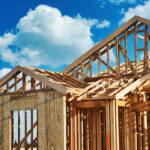The third-quarter 2024 study from ATTOM examines eligible low-income Opportunity Zones that Congress designated for economic revitalization under the 2017 Tax Cuts and Jobs Act. In this analysis, ATTOM examined 3,857 U.S. zones that had at least five home sales in the third quarter of 2024 and had enough data to analyze.
According to the analysis, in 53% of Opportunity Zones nationwide with sufficient data to measure, median prices for single-family homes and condos rose between the second and third quarters of 2024. In sixty-one percent of those zones, they were rising annually.
In over half of the Opportunity Zones examined, median prices rose by more than 10 percent a year as the country’s protracted housing market bubble persisted.
These patterns, which are found in and near low-income communities where the federal government provides tax credits to promote economic resurrection, continued a long-standing trend in which, for at least the last three years, property values inside Opportunity Zones have moved in tandem with more general price swings across the country. Regardless matter whether the housing market has experienced a sharp upturn, a slight improvement, or a slight decline, that pattern has persisted.
The third-quarter trends were mixed, with typical values increasing more in higher-priced zones and helping fewer of the very lowest-priced communities, despite overall advances within Opportunity Zone markets. This further demonstrated how the bottom of the U.S. housing market is less benefited by the 13-year national run of price increases and may become more vulnerable if that trend slows down or reverses.
However, the most recent trends once again demonstrated how, in contrast to other markets across the country, some of the most troubled towns in the country are showing clear indications of sustained economic strength or minimal downturn.
Opportunity Zones once more outperformed the country overall in the third quarter of 2024 by a number of significant metrics. For instance, median prices within the zones climbed more frequently than outside by at least 10 percent per year.
“Another quarter, another sign of rising fortunes. That again is the takeaway from home-price data inside neighborhoods with some of the most pressing needs around the country, marking just the latest indication of their economic potential,” said Rob Barber, CEO for ATTOM. “We keep seeing this over and over as soaring values push house hunters without a ton of resources out of pricier locations to more-affordable markets.”
Barber added that “the situation inside Opportunity Zones still is far from rosy. Significant numbers still face depressed prices. But the latest big picture provides more evidence of home buyers interested in these communities, which can only be a positive lure for the investments that Opportunity Zone incentives are designed to attract.”
However, the most recent trends once again demonstrated how, in contrast to other markets across the country, some of the most troubled towns in the country are showing clear indications of sustained economic strength or minimal downturn.
Opportunity Zones once more outperformed the country overall in the third quarter of 2024 by a number of significant metrics. For instance, median prices within the zones climbed more frequently than outside by at least 10 percent per year.
In all 50 states, the District of Columbia, and U.S. territories, census tracts in or next to low-income communities that satisfy specific requirements for redevelopment are designated as Opportunity Zones under the Tax Act legislation. According to the U.S. Census Bureau, census tracts are regions having 1,200–8,000 inhabitants, with an average of roughly 4,000.
In the third quarter of 2024, despite economic constraints, the average home value in the majority of Opportunity Zones was still significantly lower than the average for the majority of the country. About 80% of the zones had median third-quarter prices that were lower than the $360,500 median for the US. That was roughly the same amount as during other times during the previous three years. Additionally, in nearly half of the zones, median prices stayed below $200,000.
Significant price volatility persisted within Opportunity Zones as well, with median prices in almost three-quarters of those areas either declining or rising by at least 5% between the second quarter of 2024 and the third quarter of this year. Once more, that probably represented the low volume of sales in numerous zones.
To read the full report, click here.






